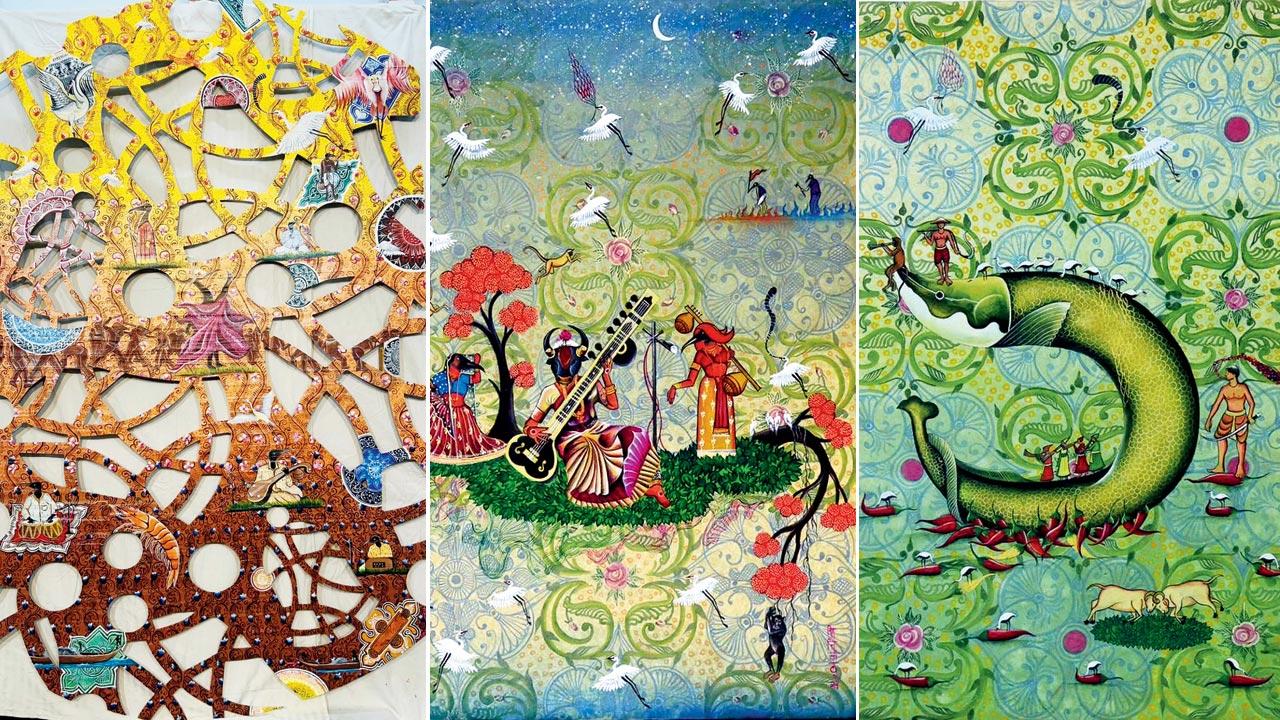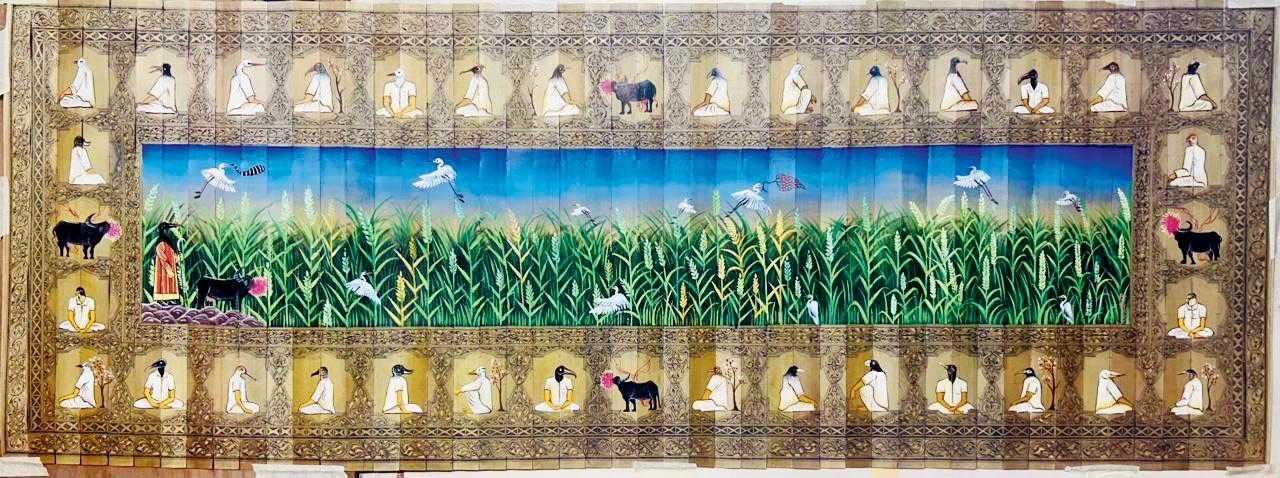A month-long exhibition invites an Odia artist to display his artworks that offer a surreal take on the ecological crisis of Chilika Lake

Revert to the Margins, 2024, watercolour on paper, 24 x 72
Utkala kamala bilisadirghika, marela malini nilambu Chilika,’ wrote late poet Radhanath Ray in the 19th century, about the blue, wildlife-abound waters of Chilika Lake in Odisha. It is in these words, artist Sitikanta Samantsinghar found the title of his ongoing exhibition, Nilambu: The Body of Blue Waters, at Nine Fish Art Gallery.
Chilika lake, the largest brackish water lagoon in Asia and a crucial habitat for South Asian migratory birds, is a victim of the climate change. The evidence lies in the massive decline in species that once migrated to this waterbody. “Once, over 256 recorded species of birds that would migrate to Chilika. This number has reduced to 160 species today,” Samatsinghar, who lives near the lake and has witnessed the transformation closely, informs us.
 The End of Getting-4, 2024, acrylic on palm leaf plywood; The artworks feature migrating birds and buffaloes of Chilika; Untitled, watercolour on paper, 33 x 22
The End of Getting-4, 2024, acrylic on palm leaf plywood; The artworks feature migrating birds and buffaloes of Chilika; Untitled, watercolour on paper, 33 x 22
The artist’s early inspiration comes from the Bhaga ChashiAndolan in 1953. The peasant movement, birthed by the killing of a poor farmer in Odisha, was led by his grandfather and freedom fighter Dr Nrusingha Samantasinghar. “I was born in a rural farming community. My artworks, hence, have always been influenced by the social and ecological realities around me,” he says. Humans, nature, animals and birds are represented through metaphors and imageries in his artworks that shed light on the pressing migration issues on the lake, along with the plight of farmers in Odisha through folk art and mythological references.
“Algae — both green and red — play an important role in helping the ecosystem thrive. Lately, algae have started disappearing from the lake. They were food source for not only the fish, but the famous Chilika prawns, and the Chilika buffaloes,” he explains. A legend suggests that the curd made by the milk of these buffaloes was served to Lord Jagannath by a milkmaid Manika. The milk continues to be used in Jagannath Temple. “Today, the fish are very small in size, leading to starvation for migrating birds. The population of the Chilika buffaloes and prawns are decreasing because they don’t have sufficient vegetation to feed on in the lake.
 Sitikanta Samantsinghar and Gourmoni Das
Sitikanta Samantsinghar and Gourmoni Das
Another challenge faced by this ecosystem is extreme weather conditions,” the artist lists. Many of his artworks build on these facts and feature impacted animals, like buffaloes and the migrating birds.
Curated by Gourmoni Das, the exhibition is a part of Dot Line Space Foundation’s ecology and research project. “Shores of Serenity [SOS] is our five-year-long project where 15 catalysts [research-based visual artists] will present the works in the extensive community project. We wish to bring to the limelight local craftsmen whose works revolve around ecology. We have been granted an NOC to continue the project for another 18 months,” Das explained, adding that Samantsinghar’s works were an extension of the idea.
 The artworks are a melange of mythology, surrealism, imagery and folk art
The artworks are a melange of mythology, surrealism, imagery and folk art
As humans, animals, birds, nature and mythological beliefs join hands in Samantsinghar’s artworks exchange roles, they highlight the need to reduce rampant consumption, and contemplate the economy of ecology and politics of resistance.
Till September 30
TIME 10 am to 6 pm
AT Nine Fish Art Gallery, Dr Ambedkar Road, Byculla.
FREE
 Subscribe today by clicking the link and stay updated with the latest news!" Click here!
Subscribe today by clicking the link and stay updated with the latest news!" Click here!










